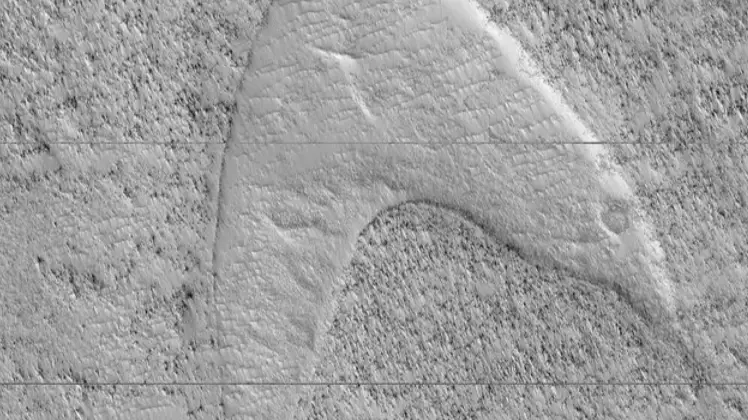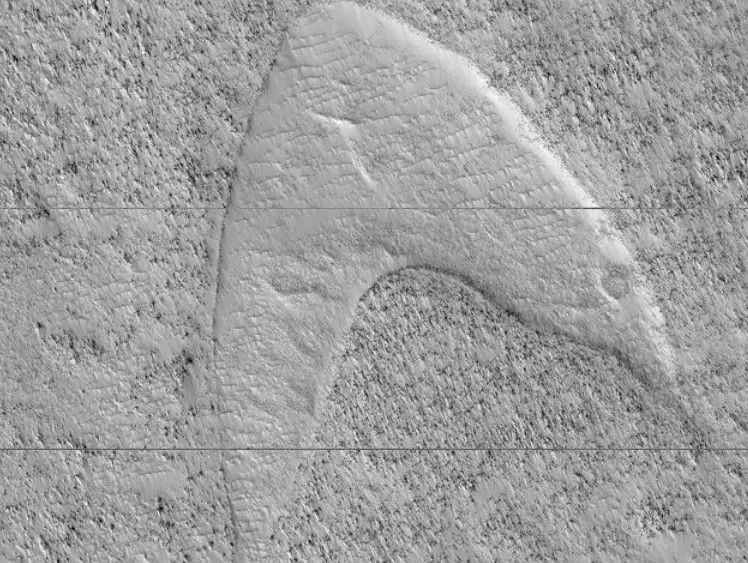
Fans of iconic sci-fi series Star Trek have been getting very excited after a peculiar symbol was spotted on the surface of Mars by one of NASA's cameras.
The space station's Reconnaissance Orbiter HiRISE captured the pic of an old dune which looked eerily like the Starfleet badge worn by the likes of Spock and Captain Jean-Luc Picard in the varius iterations of the iconic show.
And since the photograph was shared, one of the series' most famous actors has even jumped on the hype.
Advert
William Shatner, who played Captain James T. Kirk in the original series and across seven movies, took to Twitter to share his elation over the find. But as well as sharing the story to his account, the actor also took the opportunity to have a little joke with science fiction rivals over at Star Wars.
He said: "Hey @starwars! Will you hurry up your Rebel Scums? We beat you!"

Not one to take it lying down, Mark Hamill - aka Luke Skywalker - replied to Shatner's cheeky tweet with a sassy: "Looks like a boomerang to me. #Meh."
Advert
Shatner wasn't letting it go, however, and responded with a photo of himself waving his finger. The caption read: "Don't be jelly, Mark."
But if you were hoping that this would finally be proof of life on another planet, we're sorry to burst your bubble. Nope, aliens have not been watching reruns of The Next Generation on the Syfy channel.
According to the boffins who captured the snap, the 'curious chevron shapes' are actually the result of 'a complex story of dunes, lava, and wind'.
Advert
Ross Beyer from the University of Arizona wrote on the institution's blog: "Long ago, there were large crescent-shaped (barchan) dunes that moved across this area, and at some point, there was an eruption. The lava flowed out over the plain and around the dunes, but not over them.
"The lava solidified, but these dunes still stuck up like islands. However, they were still just dunes, and the wind continued to blow.
"Enterprising viewers will make the discovery that these features look conspicuously like a famous logo: and you'd be right, but it's only a coincidence."
Advert
Experts from NASA say the camera will allow them to see more detailed images of the planet than ever before.
A synopsis of the mission says: "HiRISE (High Resolution Imaging Science Experiment) has photographed hundreds of targeted swaths of Mars' surface in unprecedented detail.
"The camera operates in visible wavelengths, the same as human eyes, but with a telescopic lens that produces images at resolutions never before seen in planetary exploration missions. These high-resolution images enable scientists to distinguish 1-meter-size (about 3-foot-size) objects on Mars and to study the morphology (surface structure) in a much more comprehensive manner than ever before."
Featured Image Credit: NASATopics: Star Wars, Science, TV and Film, Funny, Interesting, Technology, US Entertainment
